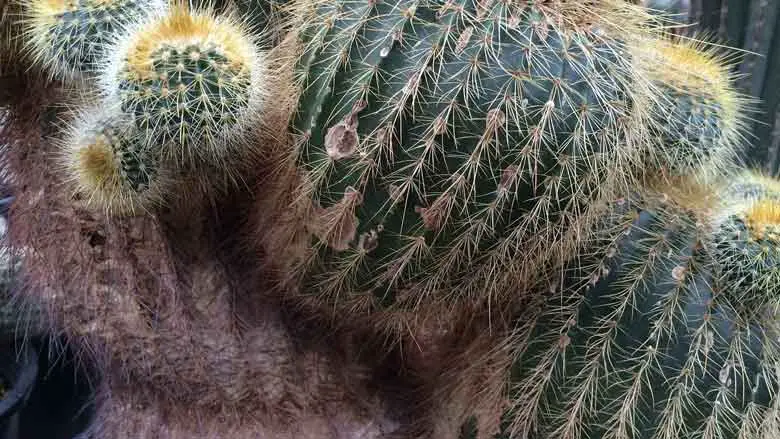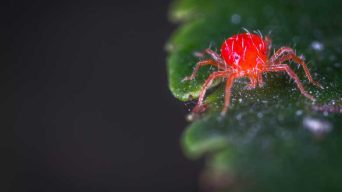Cactus corking is a natural aging process where cacti develop firm, brown, or gray areas, often at the base, due to suberin accumulation. It’s not harmful but indicates maturity, differing from rot or pest damage by its dry, firm texture without foul odor. Prevent it with proper watering and light.
Cactus corking, a natural occurrence in cacti of various shapes and sizes, involves changes in the plant’s color and texture. This phenomenon can easily be mistaken for rot or sunburn.
In this article, we’ll explore how to recognize cactus corking and address it if you observe your plant exhibiting these signs.
What Is Cactus Corking?
Cactus corking is a natural aging process of cacti that eventually alters the plant’s appearance, marking a significant stage in the cactus’s life cycle.
It’s essential to know corking is not an illness or pest damage. It is instead a natural process of growth and age in cacti.
A change in the color and texture of cacti characterizes the corking process.
The cactus plant will turn from natural green to brown or gray, with bumps often rough to the touch.
Corking can be identified when cacti lose their jagged edges and spines. They appear smooth like sandpaper because of how much flesh has been worn away by time’s passage and wind-blown sands.
Cactus corking occurs naturally as cacti grow older. Unfortunately, corking doesn’t have any warning signs, which is why it’s often a surprise when cacti are affected.
Corking will not cause the death of cacti.
Corking is just one more sign that your plant has matured in its normal life cycle, so don’t worry if you notice this process on your own or someone else’s plant!
Causes of Corking in Cacti
Corking in cacti is a natural aging process that provides support and stability to the plants as they mature.
As a cactus ages, a change in the color and texture of its skin characterizes the corking process. This occurs because the outer layers are oxidized while the inner cells retain their normal chlorophyll-based colors.
The corking phenomenon results from an accumulation of suberin on both sides of the cactus spine or ribs. Over time, these areas form calluses. This is particularly important for cacti that grow vertically, offering necessary support as the plant increases in age and size.
External factors can also trigger cactus corking. These include stressors such as transplantation, exposure to cold temperatures, and drought conditions during periods of low rainfall, which reduce the plant’s moisture supply.
This stress will prompt the cactus to produce cork at the points where it is most needed – typically near joints and bends, where there is more movement than in other parts of the plant.
Identifying Cactus Corking
Cactus corking is a process that alters the appearance and texture of a cactus plant.
Initially, a healthy cactus, characterized by a vibrant green color, begins to turn brown, corky, or crispy when corking occurs.
This change is often accompanied by a loss of spines, making the cactus resemble those sun-dried and dehydrated.
Key indicators of a corking cactus include:
- Color Change: The cactus shifts from natural green to brown, indicating drying or corking. This is often coupled with spine loss.
- Texture Alteration: Corking areas feel firm to the touch, distinct from the sponginess of a healthy cactus plant.
- Physical Appearance: The cactus may appear sunken or develop an irregular, potato-like shape, suggesting shrinkage. Its overall look may resemble an old, dried-up cactus.
- Location of Corking: While corking typically starts at the base, it can occur in other areas, including the middle of the cactus plant.
It is important to differentiate corking from the response of a healthy cactus when touched; a corking cactus feels firm rather than spongy. The brownish coloration and spine loss are distinctive signs of the corking process.
Differentiating Corking from a Rotting Cactus
Cactus corking is often confused with rotting, but distinct differences exist.
Rot is marked by the cactus plant collapsing in on itself, affecting the plant’s inner tissue.
The outer skin dries and cracks, allowing insects to penetrate. This leads to a wet, slimy interior due to mycelium growth, often accompanied by an unpleasant odor.
Conversely, corking presents with less pronounced symptoms, such as yellowish or brown striations. A key indicator of corking is a firm texture upon touch, unlike the softness of rotting.
Additionally, corking lacks the foul smell typical of root rot.
Recognizing these signs helps accurately identify the health issue affecting a cactus plant.
Differentiating Corking from Pest Infestation
Cactus corking should not be confused with a pest infestation.
Corked cactus plants exhibit a dry texture, with color changes from green to brown, black, or dark tan, depending on the duration of corking.
Contrary to a common misconception, not all physical changes in cacti indicate bugs are eating them. In many cases, these changes are simply the result of corking.
However, cactus plants are susceptible to pests like mealybugs, spider mites, and fungus gnats. These pests are usually visible on the cactus and have distinctive signs for identification:
- Mealybugs appear as white patches.
- The coloration of spider mites varies, ranging from red and brown to yellow and green, depending on the specific species.
- Fungus gnats often hover over cactus plants because they feed off of sap.
Differentiating Corking from Fungus
Cactus corking is often mistaken for fungal infections, but they have distinct characteristics.
Fungal infections typically impact the plant’s stem, causing soft, mushy spots on the cactus plant, marked by discoloration and sometimes a foul odor. This contrasts sharply with corking’s firm, dry texture.
Different fungi manifest as spots or patches varying in color — yellow, black, or white. These areas may ooze liquid, a feature not present in corking.
In contrast, corking produces a more consistent color change from green to brown or gray without liquid secretion.
How Do I Stop My Cactus From Corking?
Corking in cacti is a natural process often associated with the age of the plant. It is difficult to stop the corking process once it has started because corking occurs deep inside the plant’s body and cannot be seen from the outside.
However, once damage begins on the surface layer, you must cut off this area for corking to stop.
There are some things you can do to slow down or prevent corking before it starts:
- Be careful with watering frequency. Allow the soil to dry out before watering again.
- Move the cactus to an alternate location if the soil is poorly draining or waterlogged.
- Rotate cacti every few days to prevent them from getting too much sun exposure.
- Position it in a sufficiently illuminated space, ensuring it receives ample indirect light. Avoid exposing it to direct sunlight as this may lead to sunburn for the cactus.
- Keep cactus plants out of drafty spots or near heating vents, which could cause drying in their environment.
- Use organic fertilizers instead of chemical ones, as these have less chance of burning the plant when used improperly.
- Avoid moving cacti when they are wet because this could cause damage.
Remember, the corking process is irreversible and cannot be stopped once it starts.
So take the steps necessary to prevent cactus corking to preserve your plants’ health for as long as possible!
Final Thoughts
Cactus corking is a natural and normal part of a cactus’s life cycle. Although some may see it as a problem, it’s important to understand that this process benefits succulent plants.
Positioning cactus plants in environments conducive to their growth and well-being is important.
Contrary to concerns, corking does not signify the death of the plant.
Corking offers significant benefits to cactus plants, such as enhanced stability and support. This allows them to continue growing and expanding effectively.







